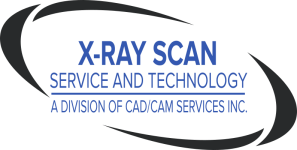X-Ray Film Scanners and Digitizers, X-Ray Film Scanning Services and Software
What to Do with X-Ray Film when you Convert to PACS
posted Sep-14-2015When you convert to PACS, or any kind of digital X-ray system, it’s important to ensure that you maintain patient continuity. Because prior X-ray studies that were captured on film may play a key role in patient care, diagnosis, and treatment going forward, it’s important that you consider how those film studies will be handled in your new digital environment. In fact, existing films may continue to be a consideration for many years to come. This is true about films in your own records, but possibly even more true concerning films coming in from outside sources.
 Inadequate planning for the handling of film images that were captured prior to your conversion to digital can add significant hidden costs. When facilities fail to address this critical issue, it can result in disrupted workflow, dissatisfaction and frustration among radiologists and staff, increased costs and, ultimately, lesser confidence on your patients’ parts.
Inadequate planning for the handling of film images that were captured prior to your conversion to digital can add significant hidden costs. When facilities fail to address this critical issue, it can result in disrupted workflow, dissatisfaction and frustration among radiologists and staff, increased costs and, ultimately, lesser confidence on your patients’ parts.
It’s Not All Digital!
With so much of our lives digital now, and with many organizations already switched to electronic medical records and digital medical imagery, you might think that medical organizations have completely eliminated paper and x-ray film. While this is the ultimate goal, the truth is that for the worldwide medical community, this is still a goal.
In the United States, and developed countries, it is assumed that most urban healthcare facilities and many suburban ones are using filmless medical imaging technologies. However, most rural areas, and even some urban and suburban facilities in poorer areas may still be at least partially dependent upon film. In some of these poorer areas and in most developing countries, facilities may just be beginning to convert from film to digital.
What this means is that film will remain as a medium for medical imaging for many years to come. This, in turn, means a methodology for incorporating film into digital systems must be an integral part of your transition to digital imaging and PACS. For most healthcare organizations, this means one or both of these two things: (1) the purchase of medical film digitizers to handle film as it comes in with patients, and (2) the hiring of an x-ray film digitizing service to speed the transition and ensure smooth workflow.
Both of these strategies can help maximize the return on digital investments by quickly providing high-quality digitization of prior analog films for side-by-side digital review. Having digitized ‘priors’ helps improve patient care and provides numerous cost and workflow benefits to the healthcare organization and the radiology department.
It’s All About the Image!
One of the most important considerations for the successful digitization of X-Ray film is image quality. If you plan to purchase an X-Ray film digitizer and digitize the films yourself, then purchase the best X-Ray film scanner you can afford. You will want a digitizer that has clinically proven reliability, image quality, consistency, and overall productivity. The product should be cost effective, lightweight and require little space. Also ask about customer service and support. Vidar, Kodak and Microtek are some of the X-Ray scanner brands that are generally considered to meet the criteria.
If you plan to outsource your X-Ray film digitizing, then find an outsource firm that has the experience of scanning thousands of X-Rays of all types and sizes. They should be able to recognize spots as small as 44mm. They should support most PACS systems and offer direct support of DICOM in order to provide appropriate image compression to avoid bottle necks in imaging. Finally consider HIPAA regulations and patient privacy concerns as well as the appropriate disposal methods of the X-Ray films after they’re digitized.
The Importance of the Plan
Going digital means changing nearly everything about the way you work now. The best way to help your staff and your patients adapt smoothly to the change is to plan ahead. Learn more by downloading our white paper.

